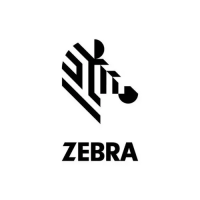
Do you have a question about the Zebra 110Xi4 and is the answer not in the manual?
| Maximum resolution | 203 x 203 DPI |
|---|---|
| Core diameter | 76 mm |
| Ribbon length | 300 m |
| Media thickness | 0.076 - 0.305 mm |
| Maximum media length | 3810 mm |
| Maximum roll diameter | 203 mm |
| Supported paper width | 102 mm |
| Media thickness (imperial) | 0.003 - 0.012 \ |
| Maximum media length (imperial) | 150 \ |
| Supported paper width (imperial) | 4 \ |
| RS-232 ports | 1 |
| Standard interfaces | USB 2.0 |
| Connectivity technology | Wired |
| Weight (imperial) | 50 lbs |
| Dimensions (WxDxH) | 261.9 x 517.5 x 393.7 mm |
| Flash memory | 8 MB |
| Certification | -BSMI, -cTUVus, -CCC, -CE, -C-Tick, -EN55022 Class B, -EN55024, -EN61000-3-2, 3, -FCC Class B, -GOST-R, -ICES-003 Class B, -IEC 60950-1 / EN60950, -KCC, -NOM, -S Mark, -STB, -UkrSEPRO, -VCCI, -ZIK. |
| Internal memory | 16 MB |
| Built-in barcodes | Code 39, Code 49, Code 93, MaxiCode, PDF417, Postnet, QR Code, UPC-A, UPC-E |
| Page description languages | XML, ZPL, ZPL II |
| Storage temperature (T-T) | -40 - 140 °F |
| Operating temperature (T-T) | 5 - 40 °C |
| Storage relative humidity (H-H) | 5 - 85 % |
| Operating relative humidity (H-H) | 20 - 85 % |
| Power requirements | 90 - 264 VAC, 48 - 62 Hz |
| Weight | 22700 g |
|---|
Details FCC and Canadian DOC compliance requirements for the printer.
Identifies and illustrates the main parts within the printer's media compartment.
Explains the function of control panel buttons, lights, and the LCD.
Provides a checklist of essential tasks before setting up the printer.
Instructions for unpacking, storing, and shipping the printer safely.
Guidance on choosing an appropriate and safe location for the printer.
Details the available interfaces for connecting the printer to a computer or network.
Step-by-step instructions for connecting the printer to a power supply.
Describes various types of media compatible with the printer.
Explains ribbon usage, types, and when it is required for printing.
Explains different print modes and their compatibility with printer options.
Illustrates the routes media takes through the printer for various modes.
Steps to prepare roll or fanfold media before loading it into the printer.
Detailed instructions for loading media in Tear-Off print mode.
Detailed instructions for loading media in Peel-Off print mode.
Detailed instructions for loading media in Cutter print mode.
Detailed instructions for loading media in Rewind print mode.
Explains different methods for calibrating the printer for optimal performance.
Instructions for adjusting the upper and lower transmissive media sensors.
Guides for adjusting printhead pressure and toggle position for print quality.
Explains how to enter and navigate the printer's setup mode for parameter adjustment.
Instructions on how to change or disable password-protected printer settings.
Procedure to print a label listing the printer's current configuration settings.
Procedure to print a label with the printer's network settings.
Details common printer parameters adjustable via the control panel.
Information on replacing printer components that may wear out over time.
Recommended cleaning intervals and procedures for printer parts.
Instructions for cleaning the outside surfaces of the printer.
Procedure for cleaning the printer's internal media compartment.
Detailed steps for cleaning the printhead and platen roller for optimal print quality.
Guidance on cleaning the various sensors within the printer.
Instructions for cleaning the snap plate when debris is present.
Procedure for cleaning the printer's cutter blade.
Instructions on how to replace a faulty fuse in specific printer models.
Checklists to help diagnose and resolve common printer issues.
Explains printer error messages, their causes, and recommended solutions.
Identifies issues affecting print quality and provides solutions.
Addresses issues encountered during the printer calibration process.
Troubleshoots issues related to data transfer between the printer and host.
Solutions for common issues encountered with the printer ribbon.
Information on using built-in self tests to diagnose printer condition.
Describes the printer's self test performed upon power-up.
Procedure to print a configuration label using the CANCEL button.
Utilized for printhead adjustments and determining printhead element function.
Method to determine ideal darkness settings for printing bar codes.
Explains how to interpret sensor profile labels for troubleshooting.
Lists the standard and optional features of the printer.
Describes the five different print modes available for the printer.
Details the features and capabilities of the ZPL programming language.
Lists the various types of bar codes supported by the printer.
Provides physical, electrical, and environmental specifications for the printer.
Detailed print specifications for different printer models and resolutions.
Specifies ribbon dimensions, lengths, and core sizes for different models.
Details media size, thickness, gap, and registration specifications.